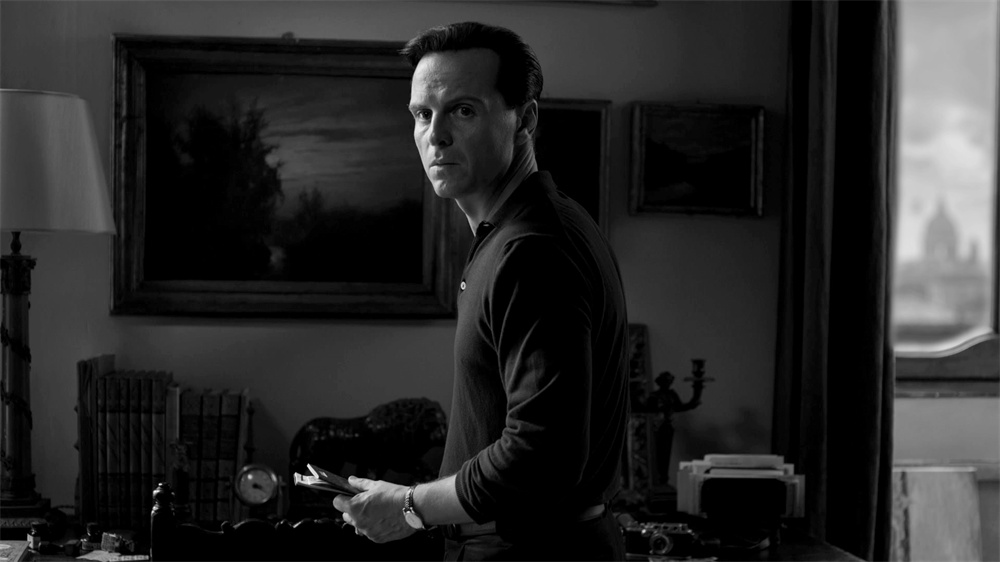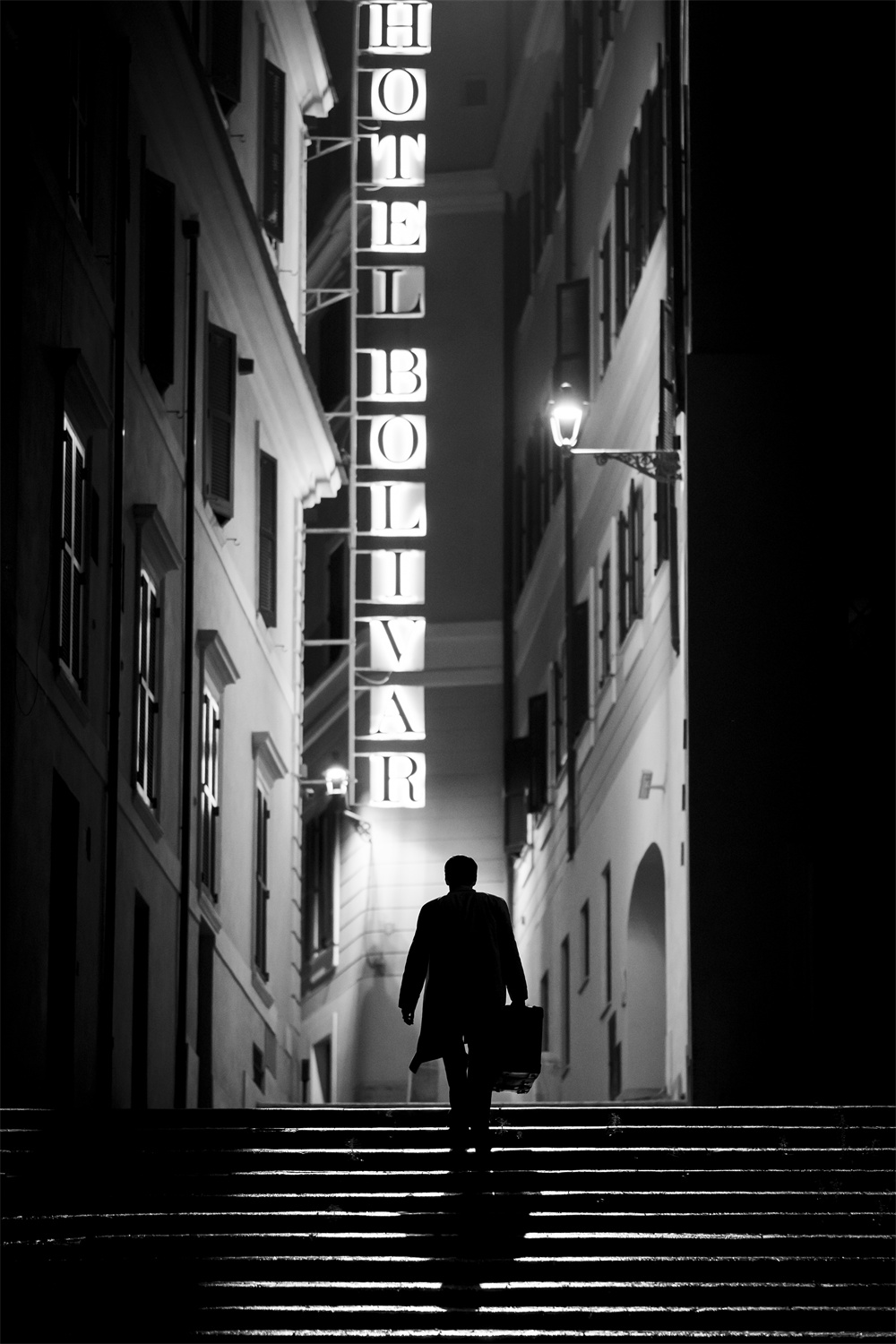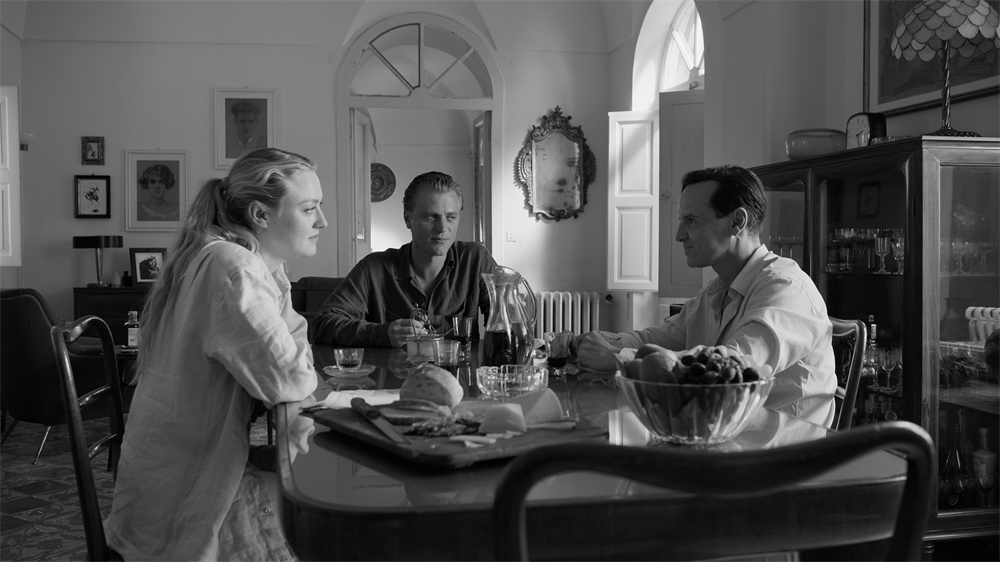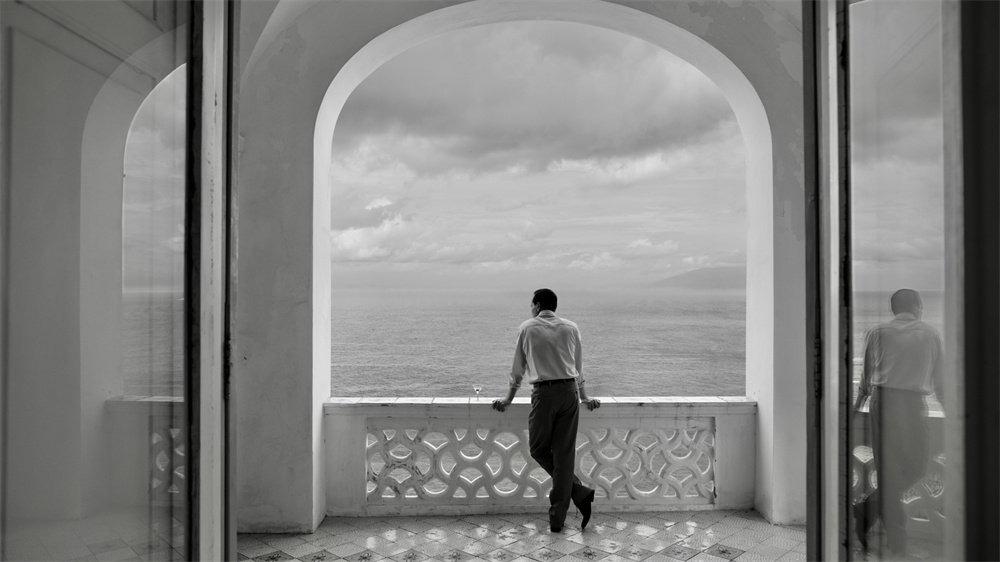
Was it Andrew Scott’s dark eyes that made Steven Zaillian’s Netflix version of Ripley turn the Italian landscape black and white?

Stills from Ripley
The black and white image makes the actor's eyes look like black agate, and when tears come out, it's like water drops seeping out of a quiet stone sculpture. Andrew Scott plays Tom Ripley, a fraudster in New York who gets a job entrusted by a rich man to go to Italy to persuade his prodigal son to return home, embarking on a trip to Italy where he can better display his criminal talent.
The dark eyes were first attracted by the black agate ring of Dickie Greenleaf (Johnny Flynn), the son of a wealthy man. The first thought of the thief Ripley was to take the ring for himself.
At their beach house in Naples, Ripley blends in with Greenleaf and his girlfriend, Maggie Sherwood (Dakota Fanning), and covets all of Greenleaf's possessions—silver cigarette cases, cameras, Rolex watches, Picassos.
He steals friendship, steals identity, and finally steals the good part of Mrs. Greenleaf's personality. With the help of the power of the dead and the magic of language, he reshapes a "good man" Ripley and then escapes.

Stills from Ripley
This version of Ripley filters out the colorful colors. From summer to winter, Naples, Rome, Palermo to Venice, the absence of color enhances other senses. In the process of crimes, small sounds can be heard, and the smoke of cigarettes has different shapes. You need good luck and a stable heart to see the dust flying in the air.

Ripley poster
There are no dizzying long shots here, it's as calming as a real old movie.
A large number of freeze-frame shots show the remains of Italian civilization. The faces of portraits and sculptures are everywhere, suggesting that the same faces have appeared again and again in the river of time. God's creations always repeat the same dark stories. The faces that artists gazed at hundreds of years ago share the same faces with today's peddlers. The sea, the sailboats, the square and the landlord's cat are all watching the development of things, but they will never reveal what they see. The hotel receptionists that Ripley met during his escape have seen countless people and are very observant. They are far from being enthusiastic citizens and are only willing to reveal a little information cautiously.

Stills from Ripley
Ripley and Greenleaf went out to sea for the last time, and only one of them returned. The boat manager later recalled: "They were just two ordinary men in their thirties."
Andrew Scott intentionally kept the character ambiguous. His Ripley is like the recurring crystal ashtray, a beautiful vessel that emits a light as changeable as agate, but also a murder weapon; it is discarded and reunites with its owner in another city. The actor gives his own melancholy to the character (such as the melancholy Professor Moriarty and the sexy priest), triggering all kinds of fantasies.
In this way, in the process of cold-blooded blunt killing and disposal of corpses, we can vaguely discern pity, tenderness or sexual desire. Ripley is obviously a perverted killer and parasite, but he seems to be a hunter with faith, who is gentle when dismembering his prey, and is grateful and reluctant to sacrifice.
Ripley appears in almost every scene of the play. Other main characters include: rich kids Dicky Greenleaf and Freddy Myers (Elliott Sumner), and Greenleaf's girlfriend Maggie Sherwood.
From the perspective of nature, these people are weak individuals. Wealth has weakened their vigilance against danger, and they swim in the lazy civilized world until they meet the genius criminal Ripley. They are superficial people who call themselves painters, writers, photographers or playwrights. Although their level is poor, they are not without charm.
Imagine, if Ripley hadn't pointed out that they were just "fakes" with money, these people (including the tough detective Lavani, played by Maurizio Lombardi) could have been someone in "The White Lotus", accidentally involved in crime, empty and boring but very interesting. Murder can only take their lives, but cannot change the endless fatigue under the Italian sun.
Greenleaf's innocence and confusion under education, Maggie's exposed chic and no longer concealed ambition, Freddy's charming masculine and feminine qualities. They are a group of translucent shadows. Ripley learns from them, constantly improves his taste, treats them the same as Italy, and uses them as creative materials for his own use.

Stills from Ripley
Among these people, Ripley is the talented one. He draws better than Greenleaf, has a better talent for writing than Maggie, and is better than Freddy in character creation, plot creation and performance. The hatred for the rich and idle people and the yearning for the good things that this class has are mixed together. Through Scott's precise performance, Ripley's evolution process can be traced.
We see his dark eyes gradually soften, and his posture changes from tense to relaxed. His imagination and memories also become gentle. Greenleaf, who appears many times as a corpse in the water, last appears in Ripley's luxurious living room. A wet and bloody muscular statue sits with its head down, and suddenly speaks: "I swam back."
At the end of the story, the victims are replaced by the murderers, and their families, lovers and friends do not insist too much, and quickly accept the ending after doing their part. Maggie even seizes the opportunity to swallow her suspicion of Ripley and lingers in the high society banquet as his friend.
In the upper class, no one is unique and everyone can be replaced quickly. Even Ripley met another him at the Earl's party. An old face who used to play a gangster approached him at the party: "My profession? Art dealer."
At the end of the story, Steven Zaillian is uncharacteristically explicit. In the Earl's mansion, a group of beautiful and empty people gather together, like the people in "Remembrance of Things Past", and exert their charm in their respective social roles. They pretend to be sophisticated and insightful or rude, testing the new members. The provocation is just right, polite, and does not go beyond the norms of social etiquette.
In the soft air, it seems that everyone is sleepwalking. The detective lacks imagination, the victim is not alert, the witness of the murderer does not speak, and those who guess the truth take a step back. In the collective sleepwalking, only the two "art dealers", one old and one young, are awake, ready to pounce on the next rich "waste" at any time, discarding their old identities and entering a new body.
Such a straightforward expression destroys the ambiguity that Ripley has worked so hard to create. It is this ambiguity that gives us room for imagination, allowing us to project all kinds of dark thoughts onto Ripley, and then walk away without taking any responsibility after the play ends.
Even the memories of murder are more beautiful than brutal. Is it too much empathy?

Stills from Ripley

